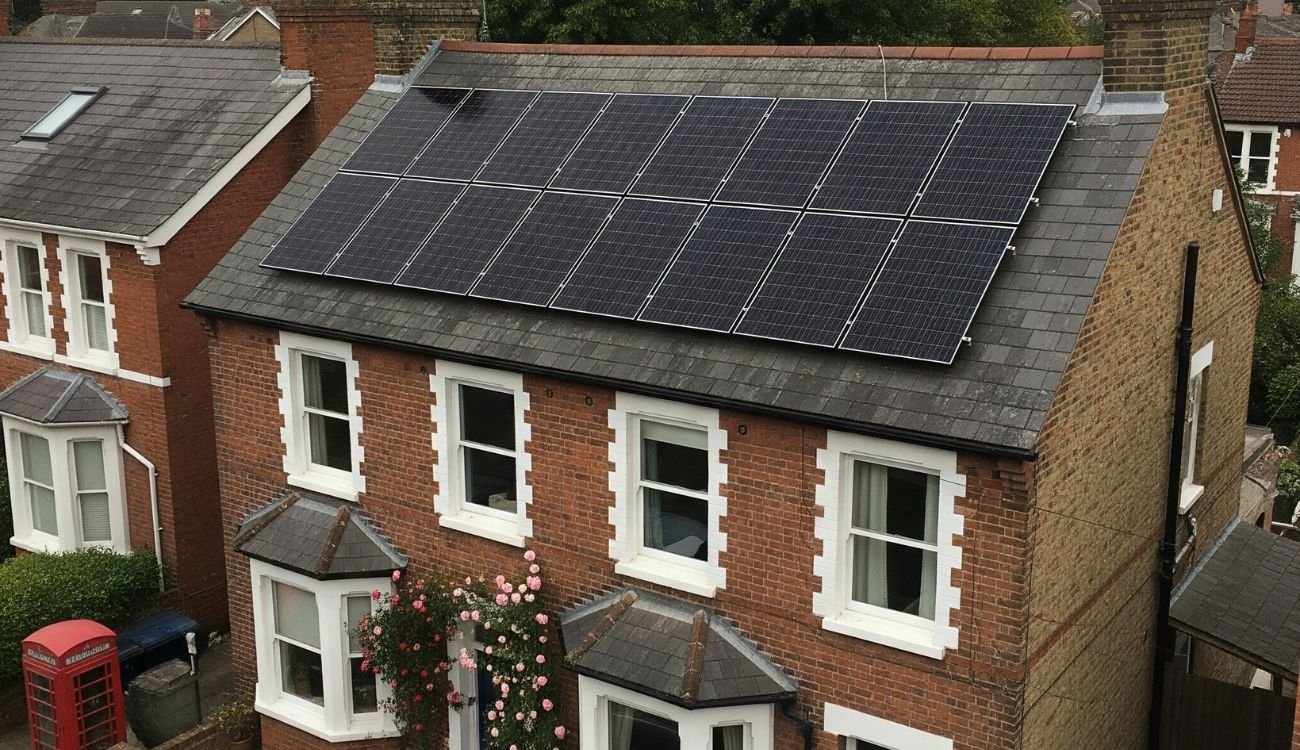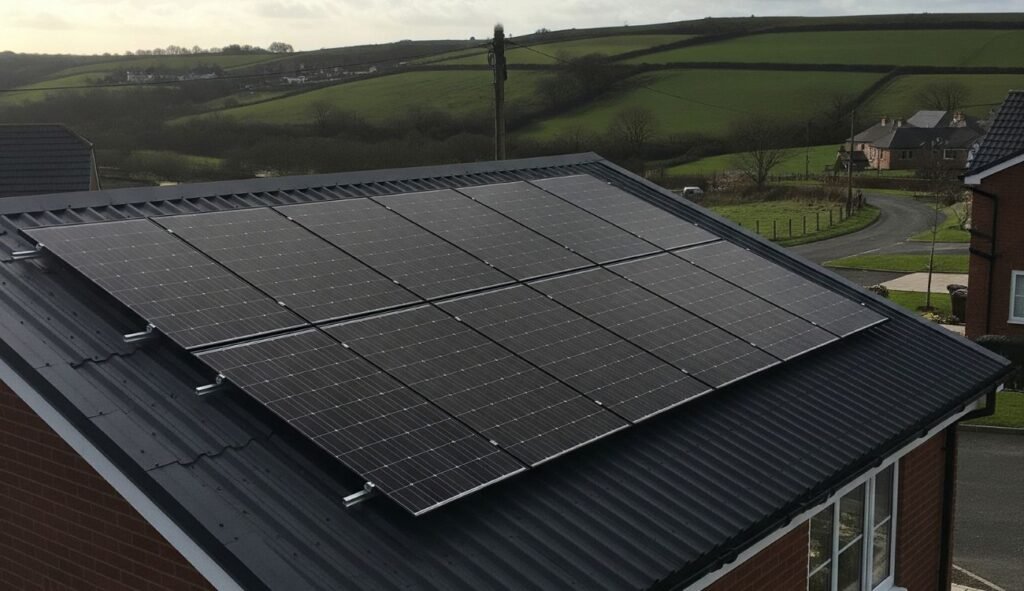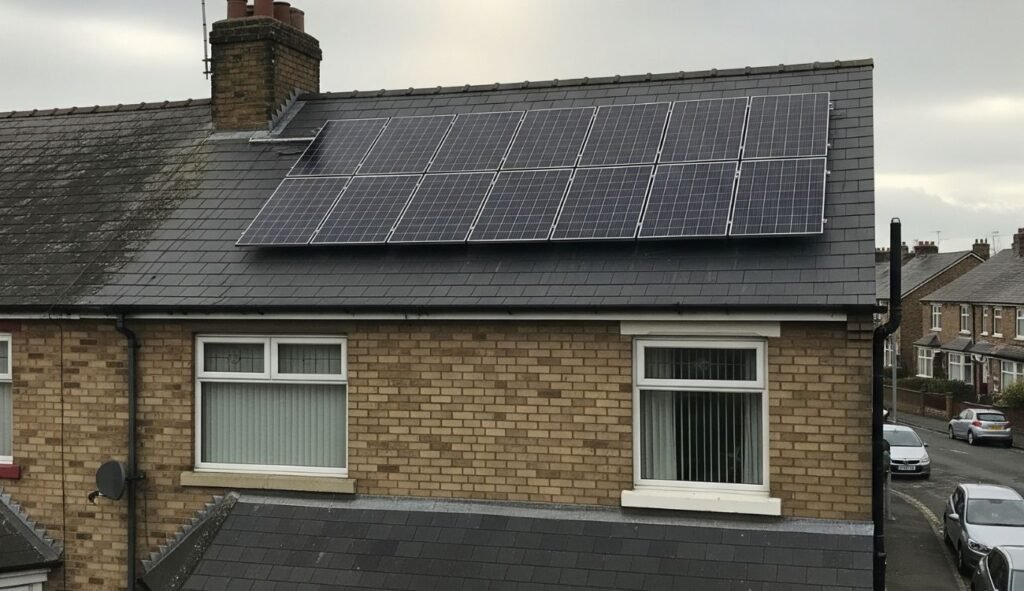Installing solar panels is a smart way to reduce energy bills and lower your carbon footprint. But many UK homeowners and landlords ask a crucial question before investing in solar technology: Should you replace your roof before installing solar panels?
This decision impacts both the efficiency of your solar system and the longevity of your property’s investment.
In this article, we’ll explore the key factors to consider, how to assess your roof’s condition, and when a roof replacement might be necessary before solar panel installation.
When Should You Replace Your Roof Before Installing Solar Panels?
If your roof is old, damaged, or nearing the end of its expected lifespan, it’s generally recommended to replace or repair it before installing solar panels.
Solar panels are designed to last 25 years or more, so installing them on a roof that might fail prematurely could lead to costly removal and reinstallation later.
By ensuring your roof is in good condition helps protect your solar investment and prevents future disruptions.
Key signs you should consider a roof replacement first:
- Roof age exceeds 20 years (typical lifespan for many UK roofing materials)
- Visible damage such as missing or cracked tiles
- Evidence of leaks or water damage inside your home
- Structural weaknesses or sagging areas
- Insufficient roof integrity to support solar panel mounts safely
How Do Roof Conditions Affect Solar Panel Installation?
The condition of your roof directly influences both the safety and efficiency of your solar panel system. A strong, intact roof provides the necessary support to secure solar panels firmly against UK weather conditions, including rain, wind, and snow.
If the roof is weak or damaged:
- Installation risks increase, potentially voiding warranties
- Panels may not be aligned optimally, reducing energy production
- Future repairs may require dismantling the solar array, increasing costs
The Energy Saving Trust highlights that a well-maintained roof is essential for effective solar installation, maximising your return on investment over the lifespan of your system.
How Can You Assess If Your Roof Needs Replacing?
A professional roofing inspection is the best way to determine whether your roof needs replacing before solar installation. Roofers or solar installers usually evaluate:
- The roof’s age and material condition
- Structural integrity and ability to carry extra weight
- Evidence of rot, leaks, or damage to underlay and decking
- Suitability for mounting solar panels securely
Homeowners in Tyne and Wear, Newcastle, and the North East of England can contact Future Heat for a free roof assessment and solar panel quote. Our experts specialise in solar installations tailored to your roof’s condition and maximise energy efficiency.
Can You Install Solar Panels on an Old Roof?
While technically possible, installing solar panels on an old or damaged roof is usually not advisable. Solar installers might still proceed, but it can lead to:
- Reduced panel lifespan due to roof deterioration.
- Voided warranties from solar manufacturers.
- Increased risk of water leaks around panel mounts.
- Higher future costs for repairs and system downtime.
Landlords and commercial property owners should carefully weigh these risks to avoid expensive setbacks and to comply with building regulations.
What Roof Materials Are Best for Solar Panels?
Most common UK roofing materials can support solar panels, but some are more practical and installer-friendly than others. The type and condition of your roof influence not just the ease of installation, but also the longevity and performance of the system.
Concrete and Clay Tiles
Concrete and clay tiles roofs are widely used in UK homes and are typically ideal for solar panel fixing due to their strength and durability. However, older tiled roofs may become brittle, making pre-installation checks important.
If your roof tiles are already damaged or have been patched repeatedly, a full replacement might be more cost-effective than trying to mount a system on an unstable surface.
Insights: Read our guide on installing solar panels on a concrete roof to get a better understanding of the process involved.
Slate Roofs
Slate roofs, while visually appealing and extremely long-lasting, can pose challenges. Their fragility means installers need to take extra precautions during mounting to avoid cracking the tiles.
In these cases, it’s often best to work with installers experienced in dealing with slate roofing, especially if you’re planning to install panels on less typical areas like a garage roof, where slate may be used for consistency with the main house design.
Flat Roofs
Flat roofs are increasingly common, particularly on extensions and modern builds. These require alternative installation techniques using ballasted or angled mounting systems, as drilling into the waterproof membrane is typically avoided.
The material beneath the membrane matters too, whether it’s rubber, felt, or fibreglass, the structural support and membrane condition must be assessed to ensure secure placement.
Insights: Take a look at our guide on how solar panels are installed on flat roofs.
For instance, if your extension has a rubber roof, installers must factor in weight distribution and potential heat absorption to prevent damage. Our guide on installing solar panels on a rubber roof breaks down everything you need to know.
Fibreglass Roofs
Similarly, fibreglass roofs can work well with solar panels if the laminate is in good condition and the fixings don’t compromise waterproofing.
Garage Roofs
Garage roofs, especially those with older coverings or limited load capacity, require special consideration. If you’re planning to fit solar panels on a garage roof, factors like rafter spacing, material condition, and available sunlight exposure are key to determining suitability.
It’s not uncommon for these roofs to have aged coverings or lighter framing, making reinforcement or resurfacing necessary before proceeding.
Ultimately, the better suited your roof material is to solar installation, in both structure and lifespan, the more efficient and trouble-free your system will be.
If your roof is nearing the end of its life or was built with lightweight or brittle materials, replacing it with a more durable option ahead of your solar investment can reduce long-term maintenance and improve system output.
How Does Roof Orientation and Condition Affect Solar Panel Efficiency?
Even if your roof is in good condition, its orientation and shading affect solar panel performance. South-facing roofs are ideal in the UK for maximum sunlight exposure. East- and west-facing roofs can still work well but may produce less energy.
Roof damage such as moss, dirt, or broken tiles can reduce panel efficiency by shading panels or interfering with mounting.
Why Is It Important to Work With Experienced Solar Installers?
Experienced solar installation companies understand the complexities of roofing and solar integration. They can:
- Conduct thorough roof condition assessments.
- Recommend roof repairs or replacements when necessary.
- Design solar panel layouts that maximise energy generation.
- Handle all permits and ensure compliance with UK standards.
For residents of Newcastle and the wider North East, Future Heat offers trusted expertise and free solar quotes to help you navigate these decisions with confidence.
FAQs
1. How long does a typical roof last before needing replacement?
Most UK roofs last between 20 and 30 years depending on the material and maintenance. Slate and metal roofs often last longer.
2. Will installing solar panels void my roof warranty?
Not usually, but some roof manufacturers require professional installation to maintain warranty. Always check with your roofing provider.
3. Can solar panels be installed on flat roofs without replacing the roof?
Yes, flat roofs use specialized mounting systems that usually don’t require roof replacement unless the roof is in poor condition.
4. Does roof replacement increase the overall value of my property with solar panels?
Yes, combining a new roof with solar panels increases property appeal and market value due to improved aesthetics and energy savings.
5. Are there any grants or financial support for roof replacement when installing solar panels?
Some local schemes and government programmes offer support for energy efficiency upgrades, including roof improvements. Check the UK Government’s energy efficiency grants for eligibility.
Our Verdict
Deciding whether to replace your roof before installing solar panels is a critical step to protect your investment, ensure safety, and maximise energy generation. A roof in good condition provides the necessary support and longevity for your solar system, preventing costly future issues.
Professional assessment from trusted installers, like Future Heat in Tyne and Wear and Newcastle, ensures you get tailored advice and a smooth installation process.
By carefully considering your roof’s age, condition, and material, you can make an informed decision that benefits your home or commercial property for decades.
Myles Robinson is a seasoned expert in the boiler and home improvement industry, with over a decade of experience. He is deeply committed to environmental sustainability, actively promoting energy-efficient heating solutions to help households reduce their carbon footprint. By combining industry expertise with a dedication to environmental responsibility, Myles continues to lead efforts in transforming home heating practices towards a more sustainable future.











